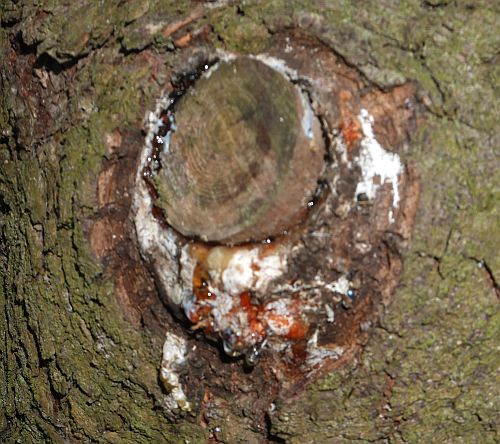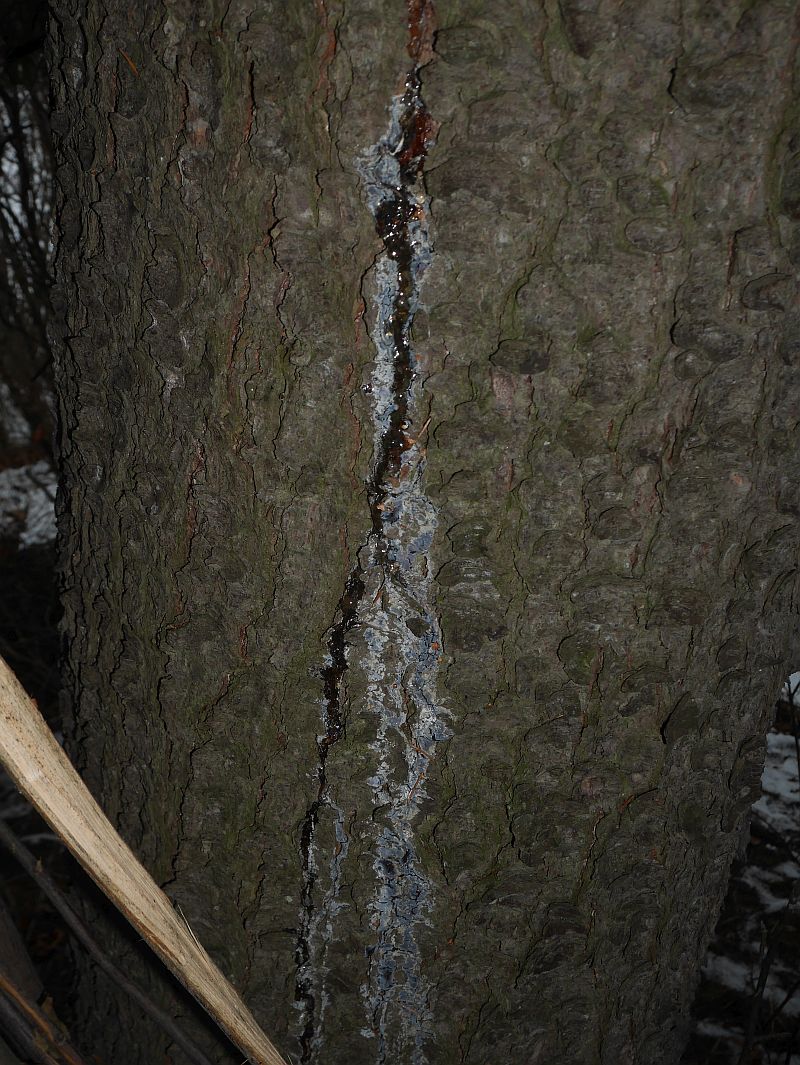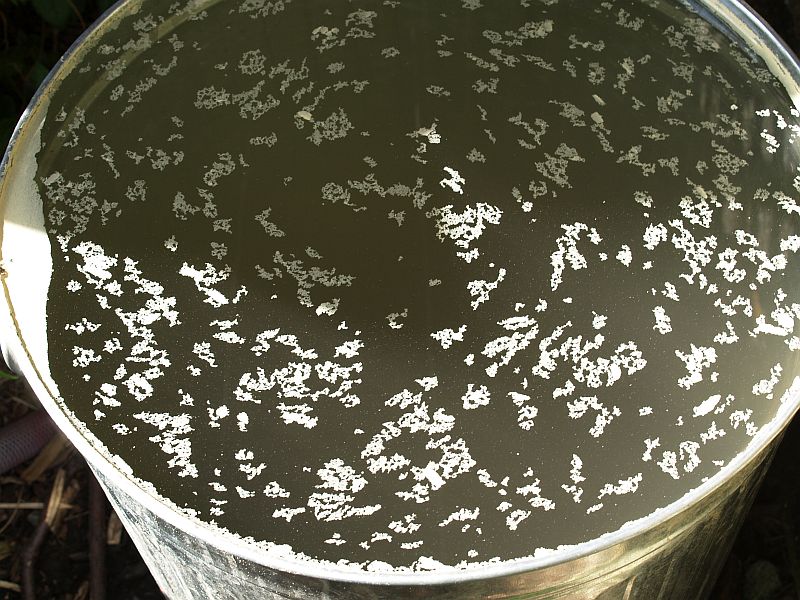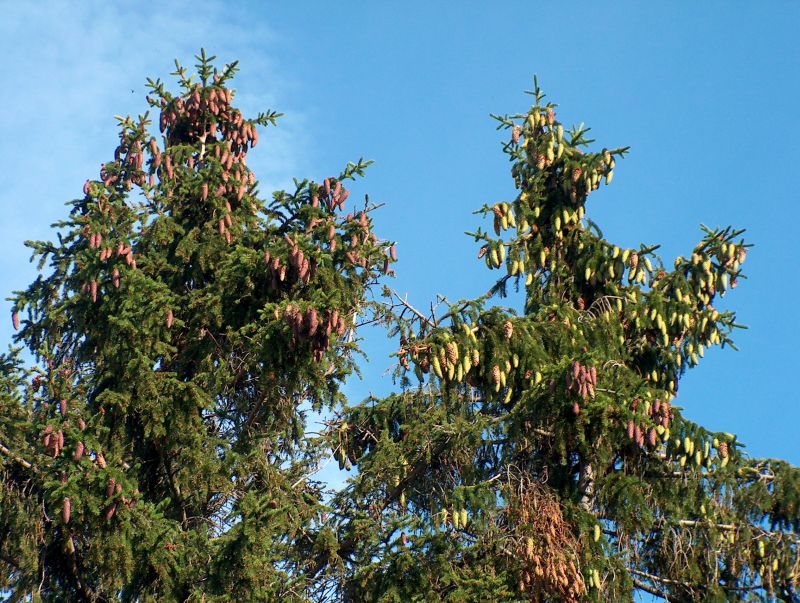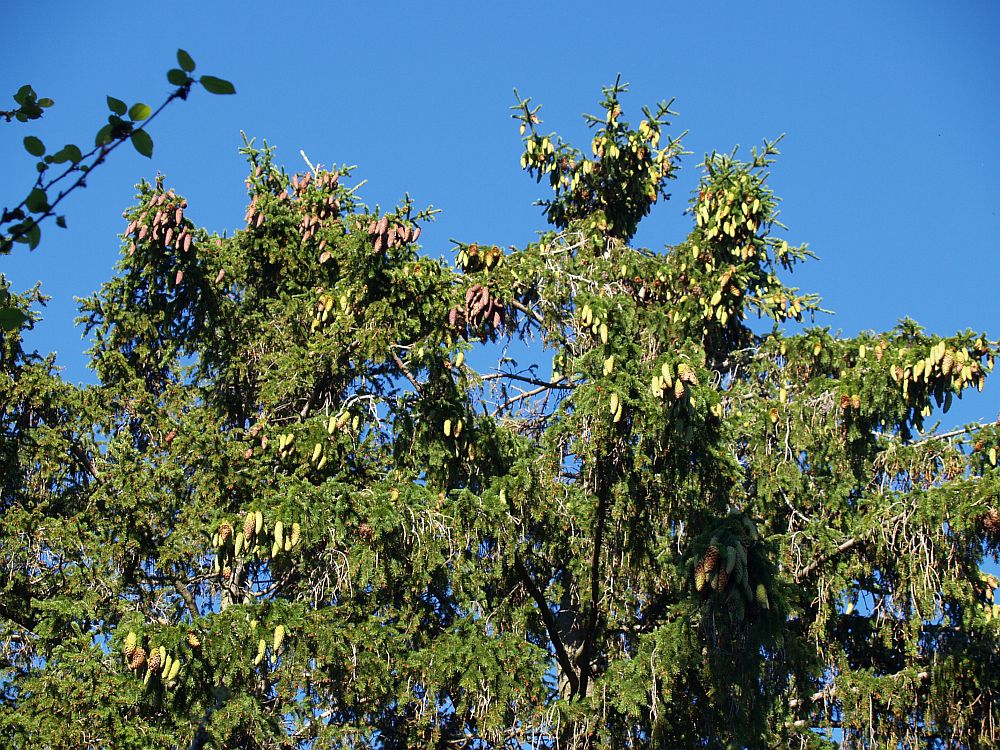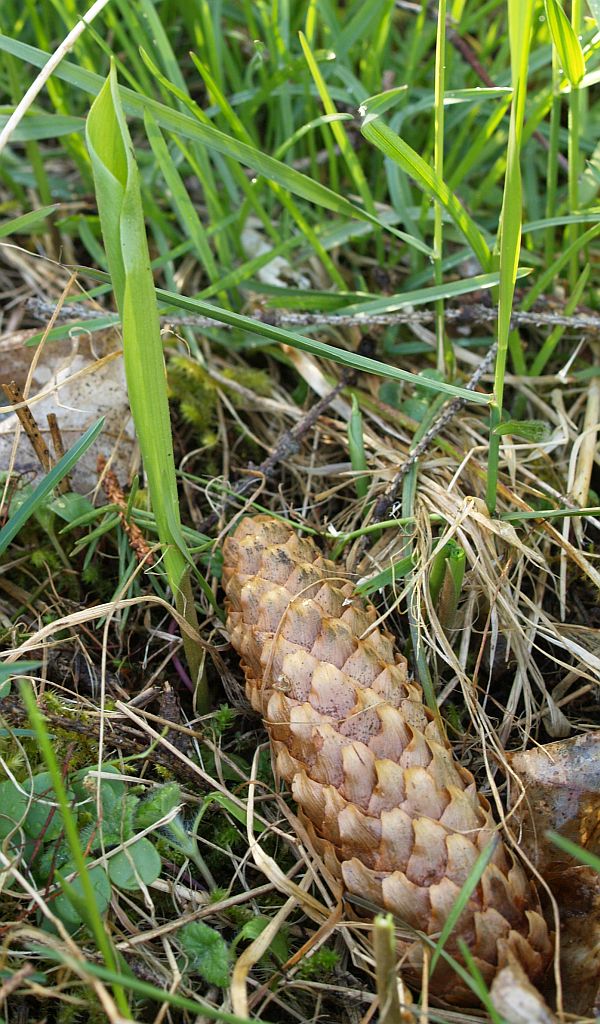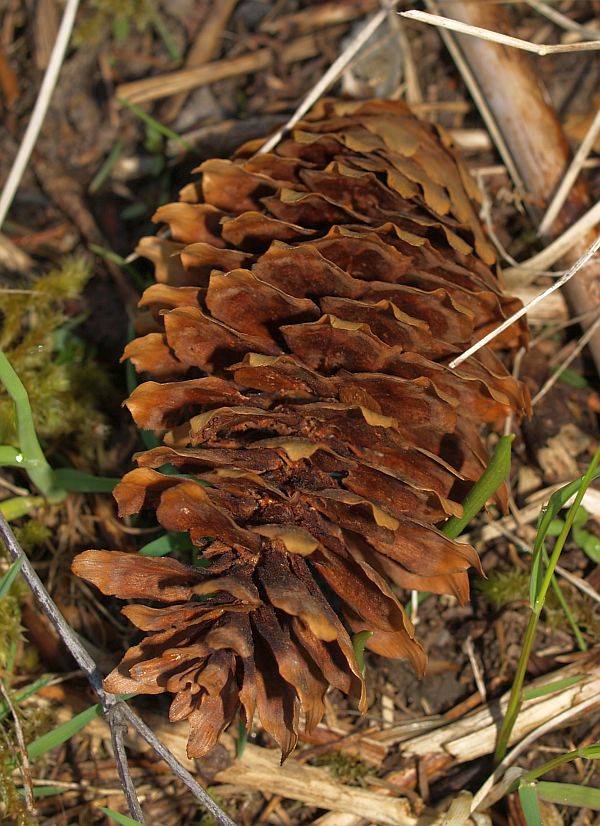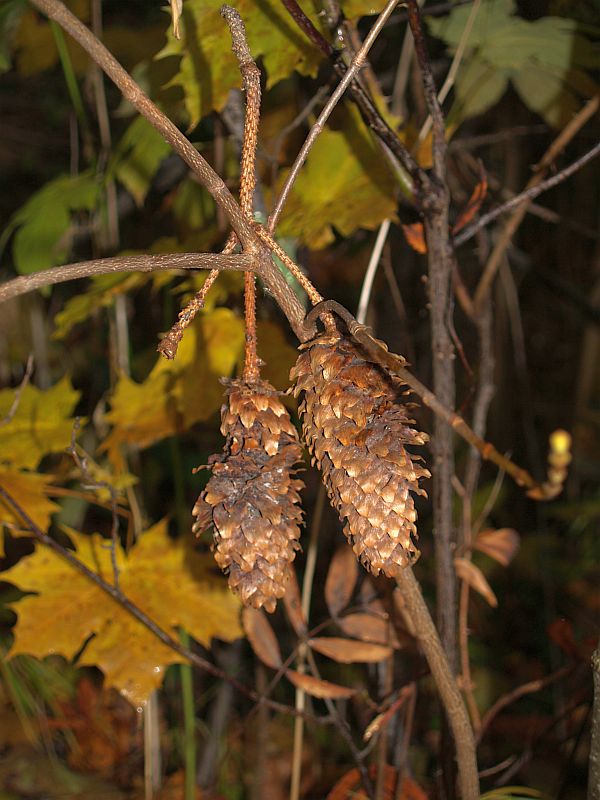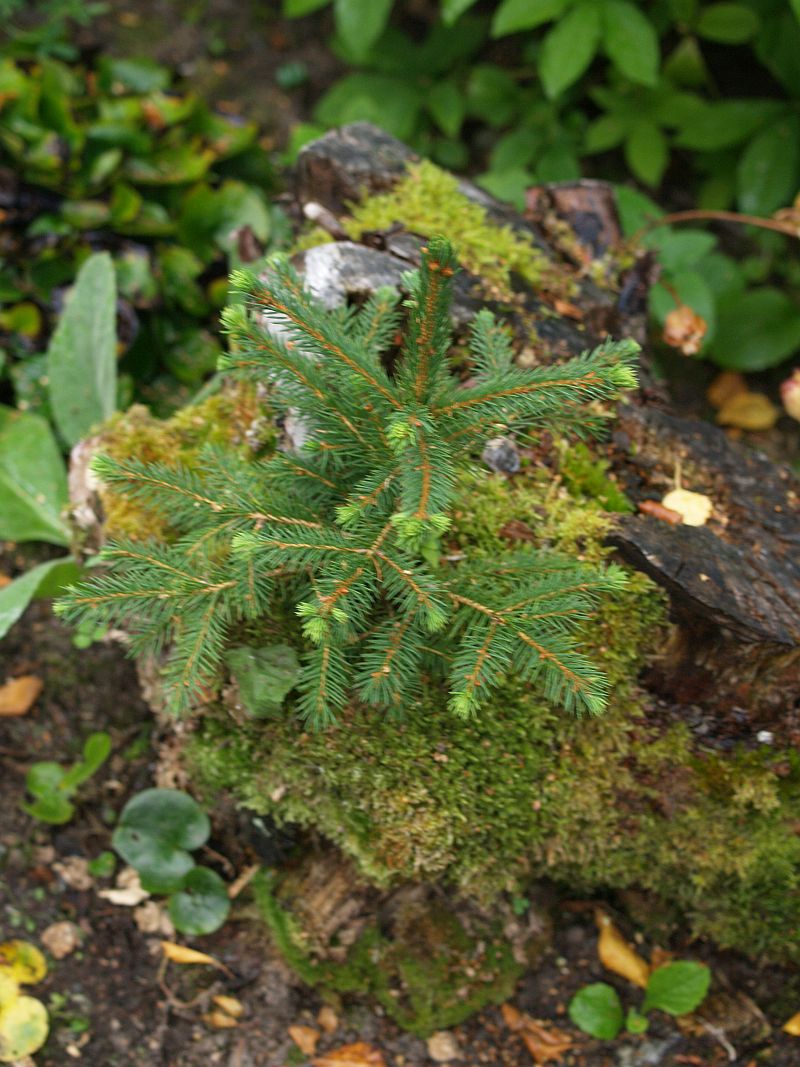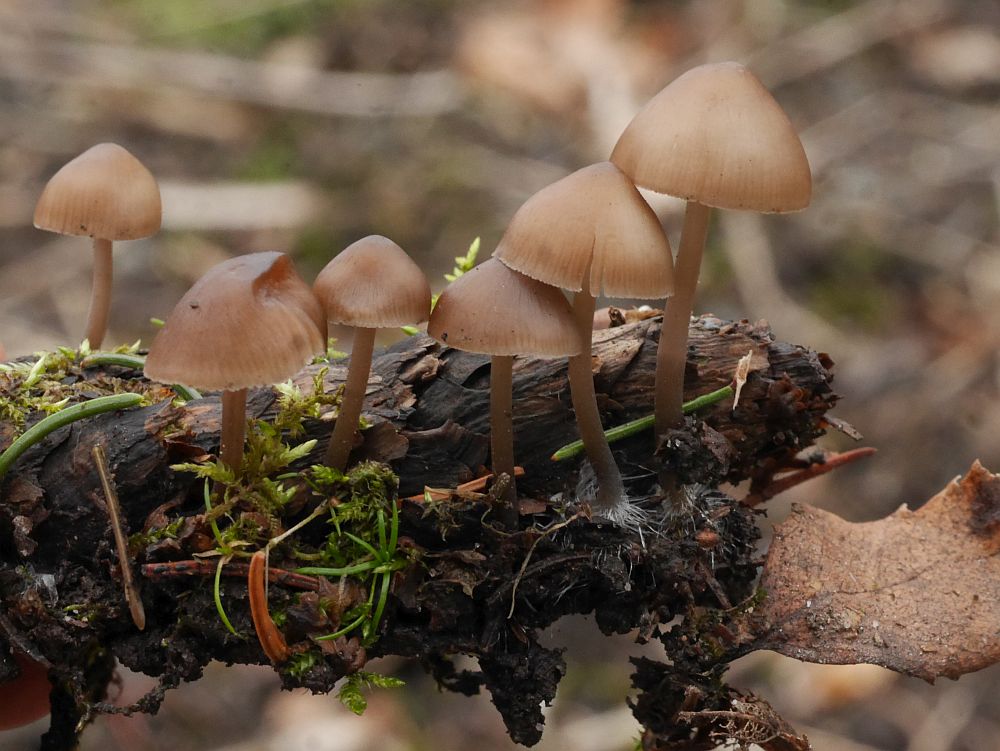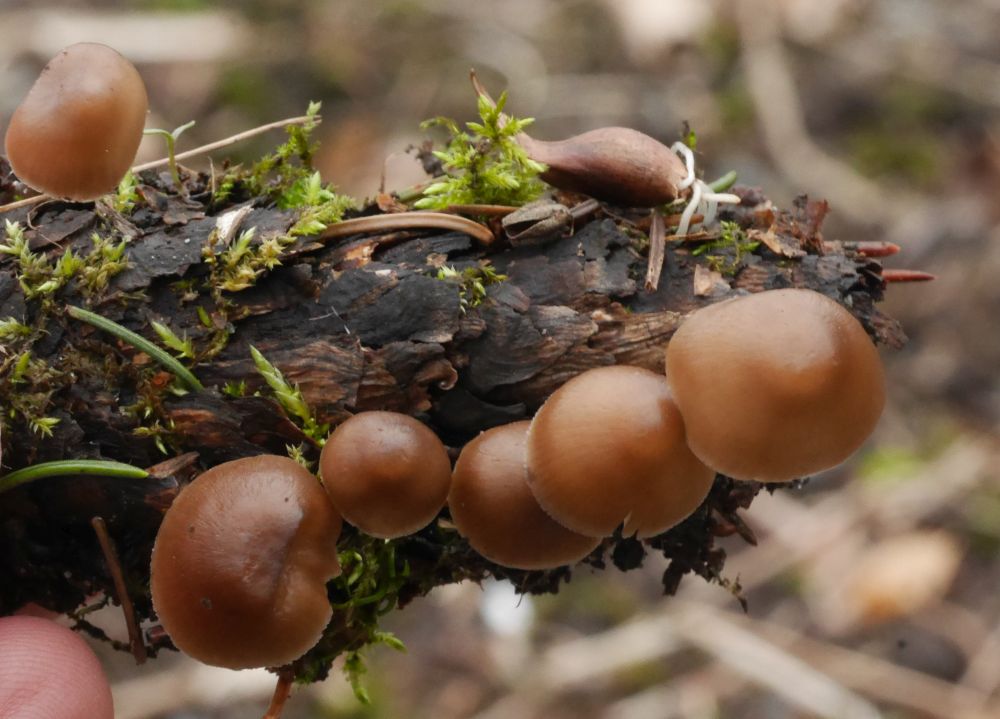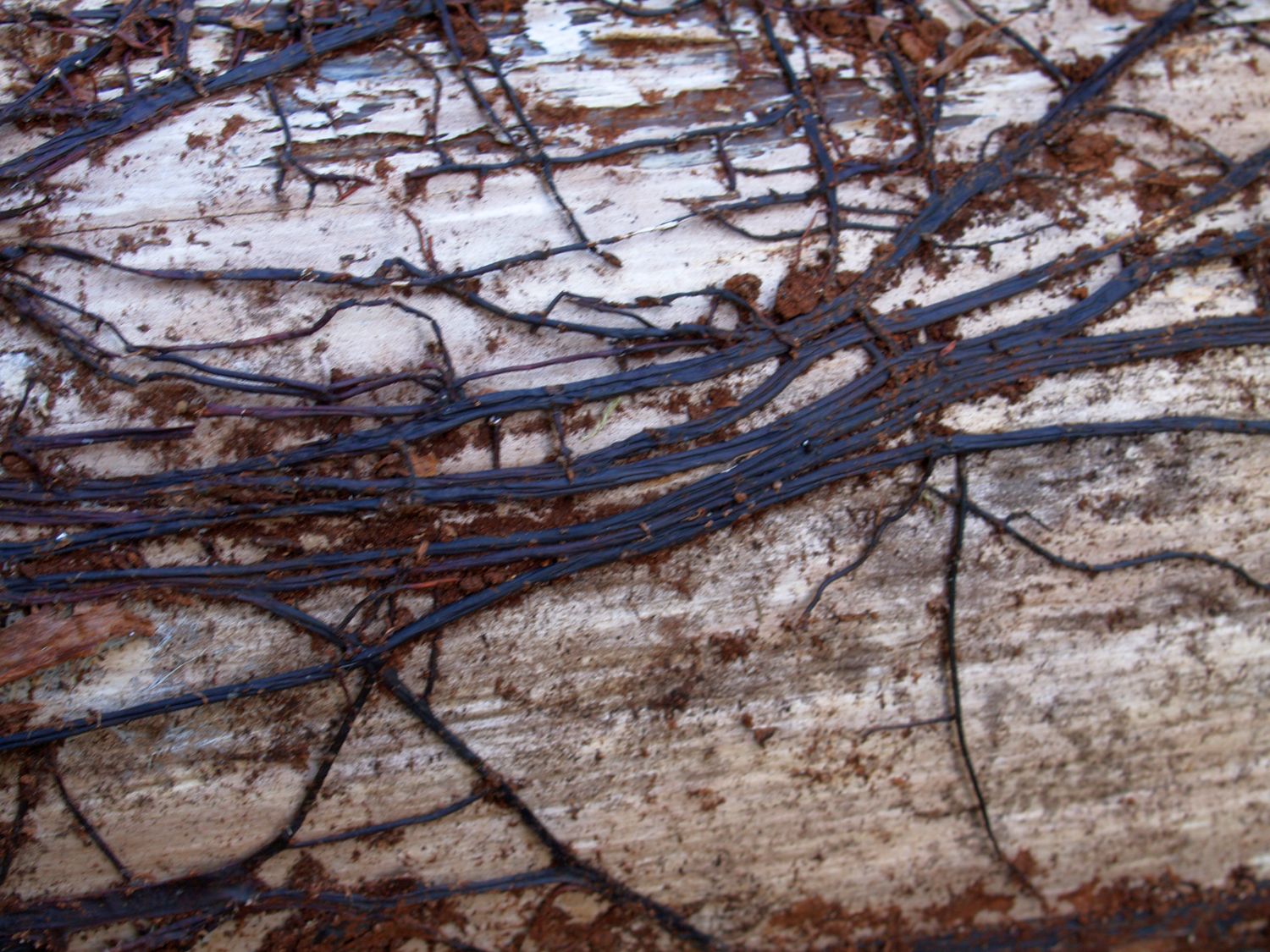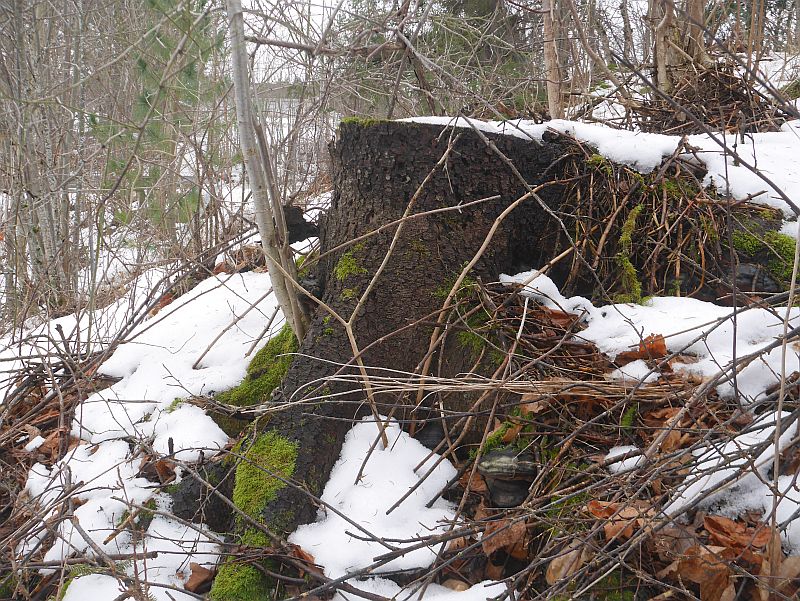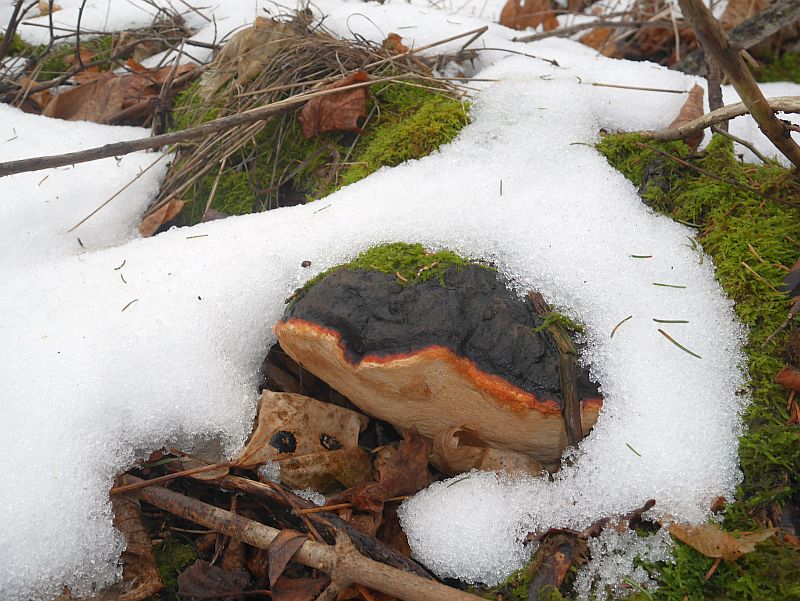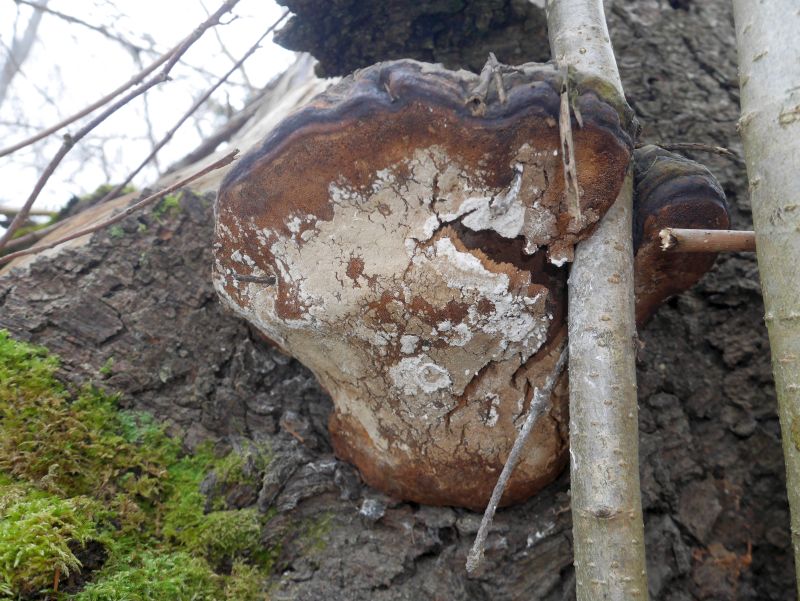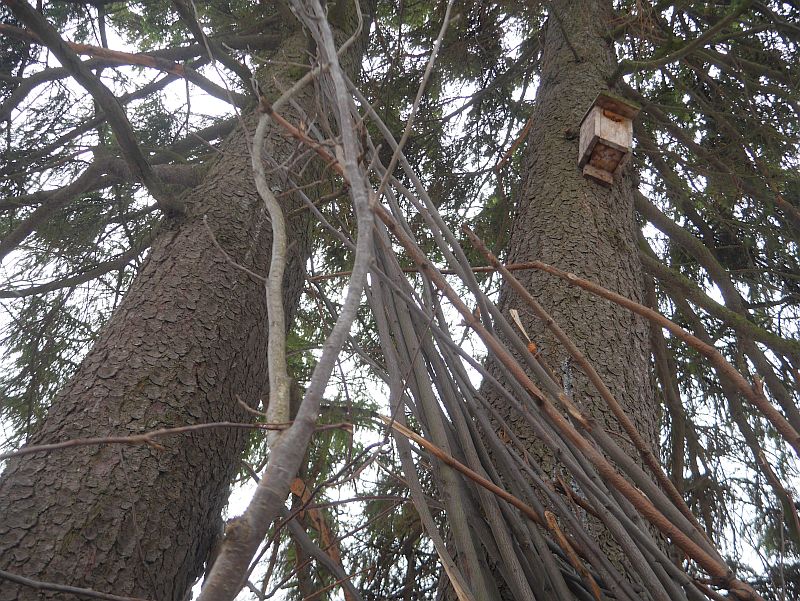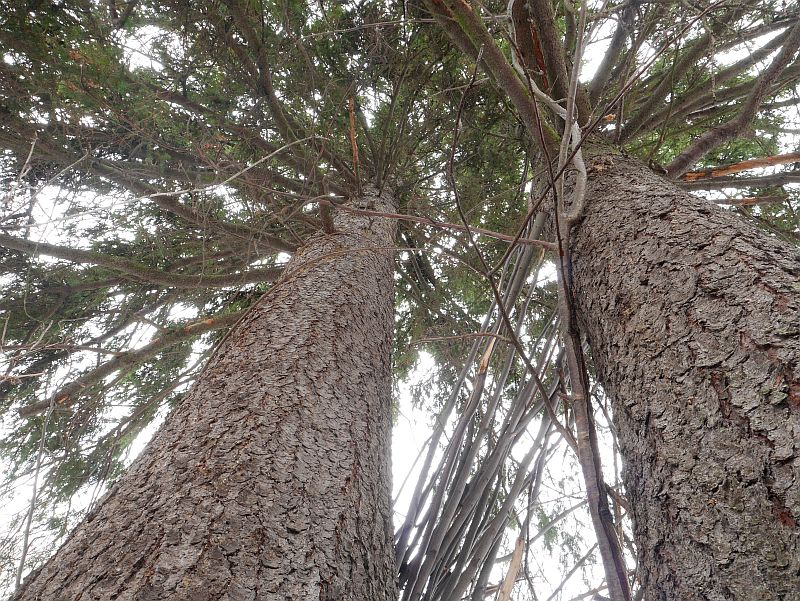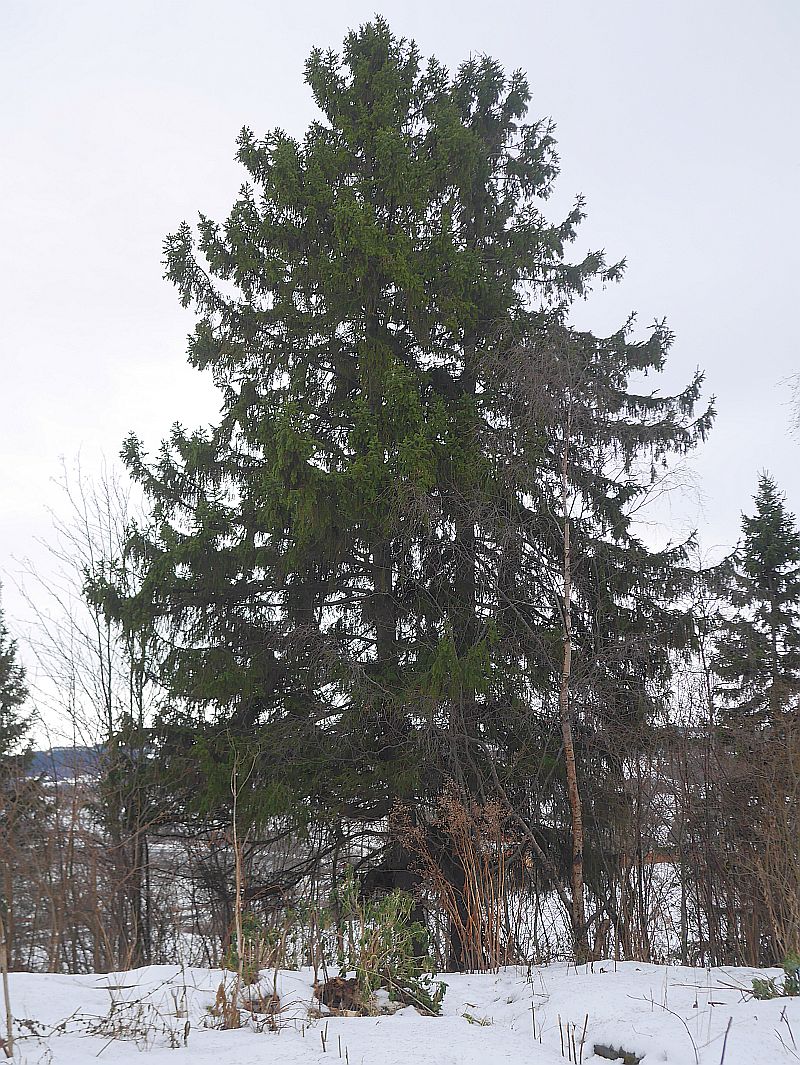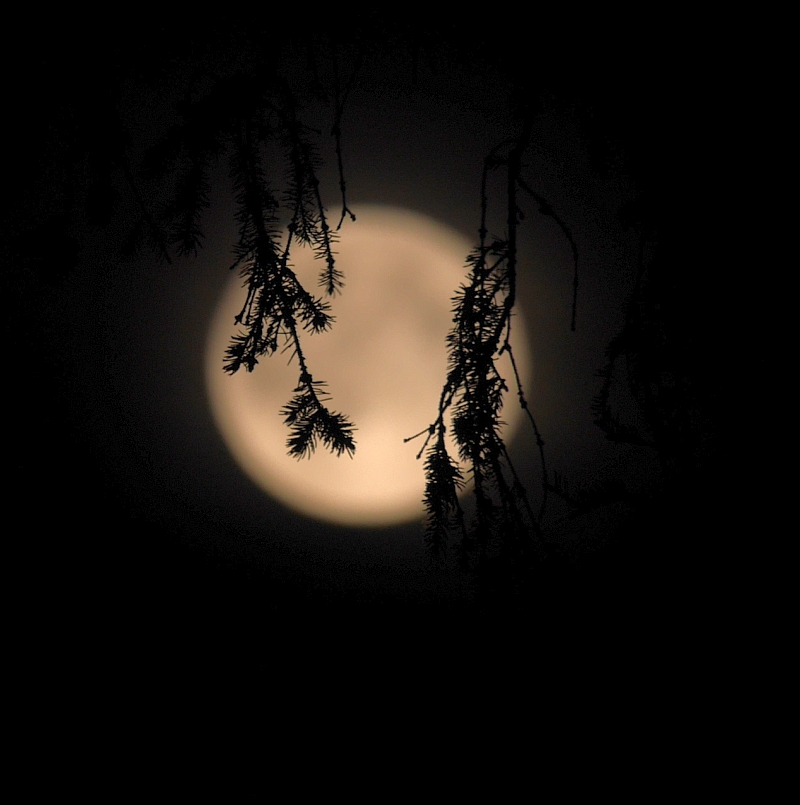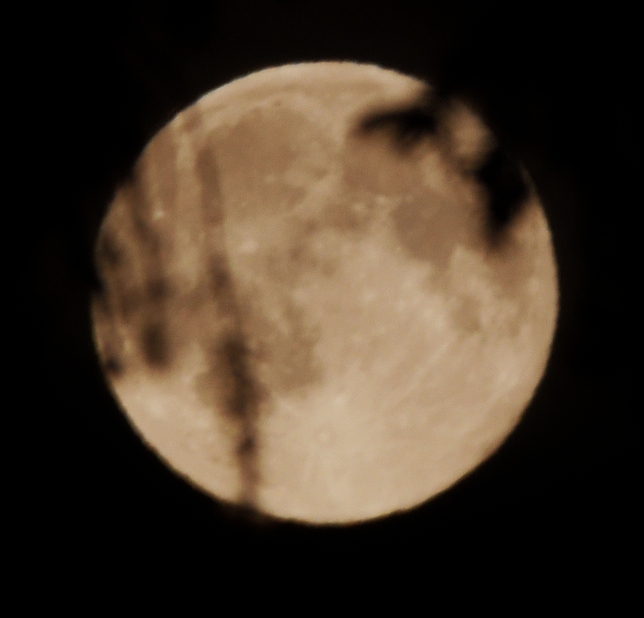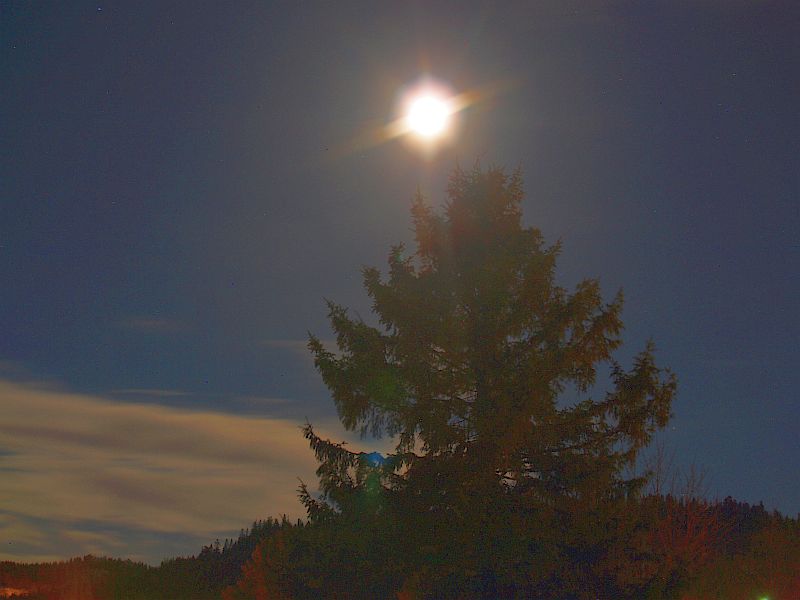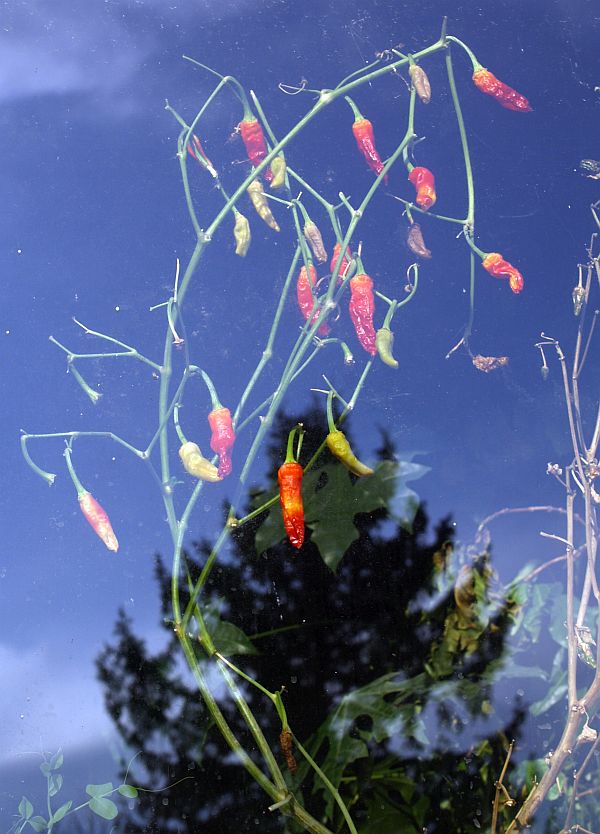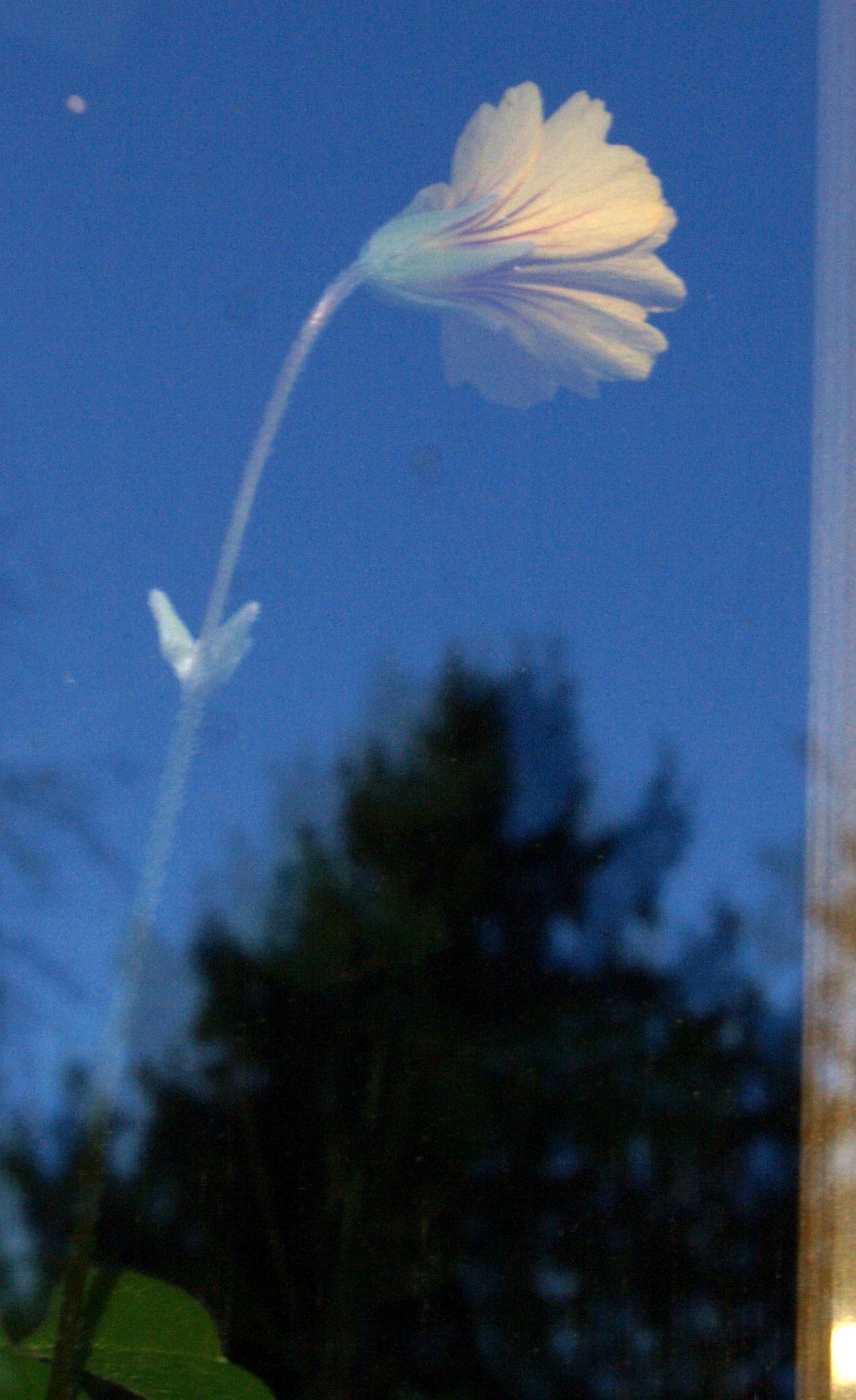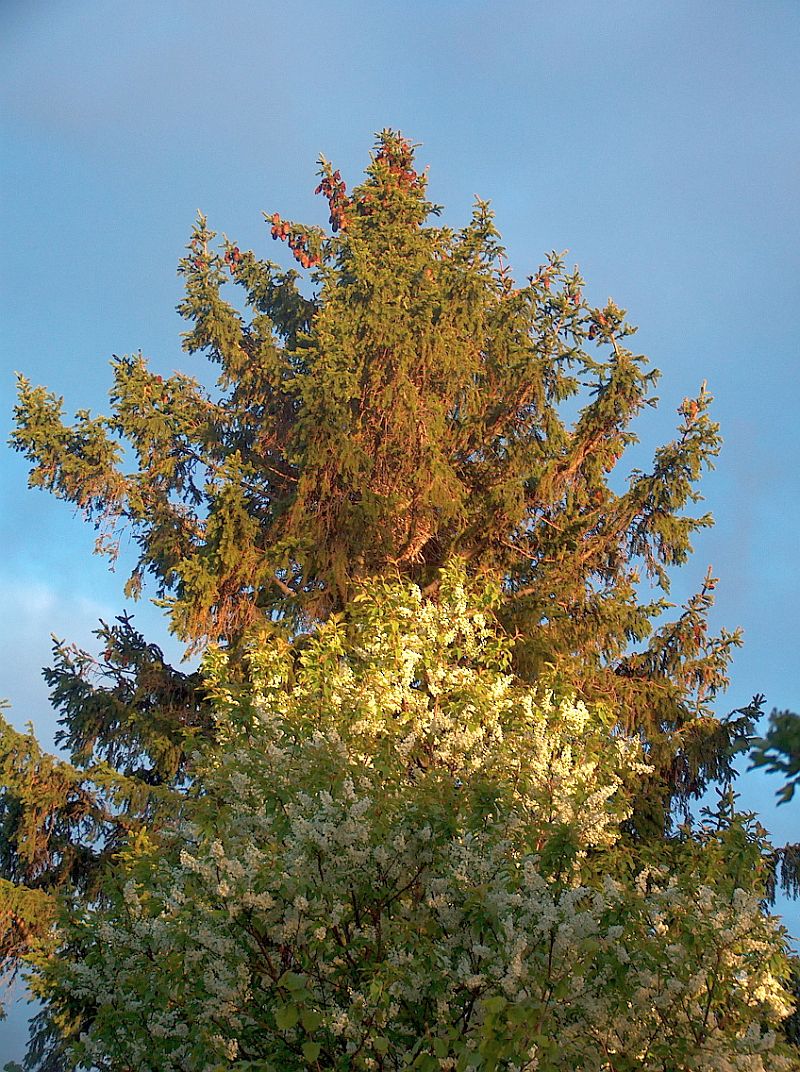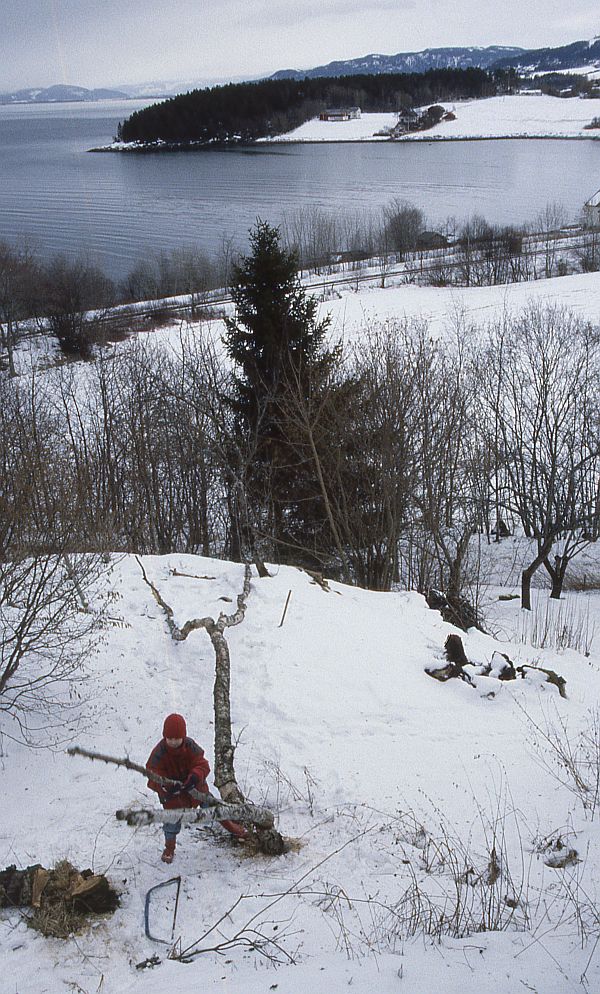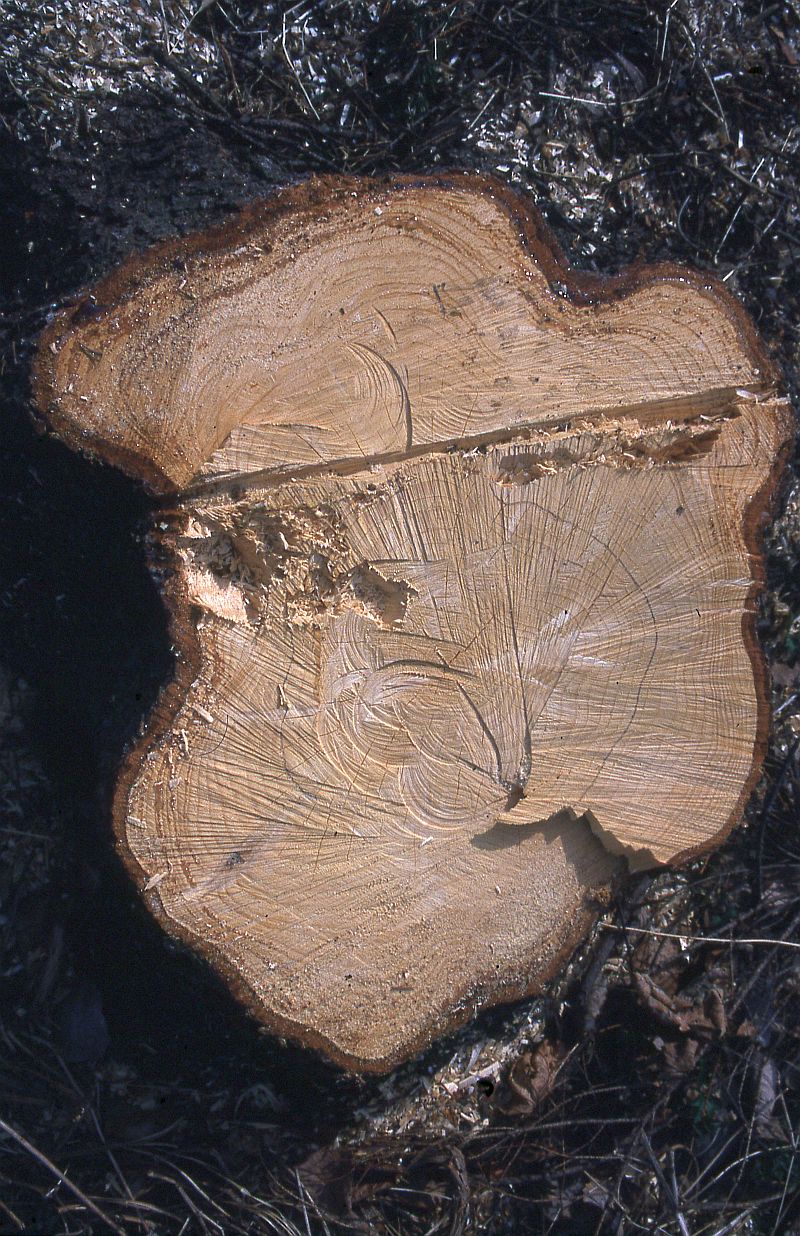This is a long post to document the importance of Norway spruce, gran in norwegian (Picea abies) in my garden. All pictures shown are taken in the garden.
Milder weather has arrived with strong southerly winds and the garden around the twin spruce trees was covered in fallen spruce needles (video below), something which is only obvious when there’s snow on the ground. Norway spruce (Picea abies) needles live for only a few years before being shed.
Pairs of spruce trees had been planted by the previous owners in the 1940s-1950s in four different parts of the garden and about 5 others have appeared, presumably self-sown from the original plantings, although gran (Norwegian name) is a common forest tree in this area and an important economic species. Only one of the original pairs still exist as I felled them to make room for a diversity of fruit and berries and because of an area of the garden had been attacked by an aggresive form of honey fungus (honningsopp) (see below). Despite finding honey fungus on the roots of the oldest two trees maybe twenty years ago they still seem to be in good health. On my exposed hilltop they’ve survived extreme winds, particularly Storm Dagmar at Xmas 2011 which felled large numbers of trees also in this area. The film below was put together from a series of still pictures some hours after the storm peak that destroyed my greenhouse; see https://www.edimentals.com/blog/?p=18189
This Google Street view picture from before Dagmar in 2010 shows the intact greenhouse and the pair of remaining oldest spruce trees and a couple of younger self-sown trees to the right (the yellow shed is in the neighbour’s garden). 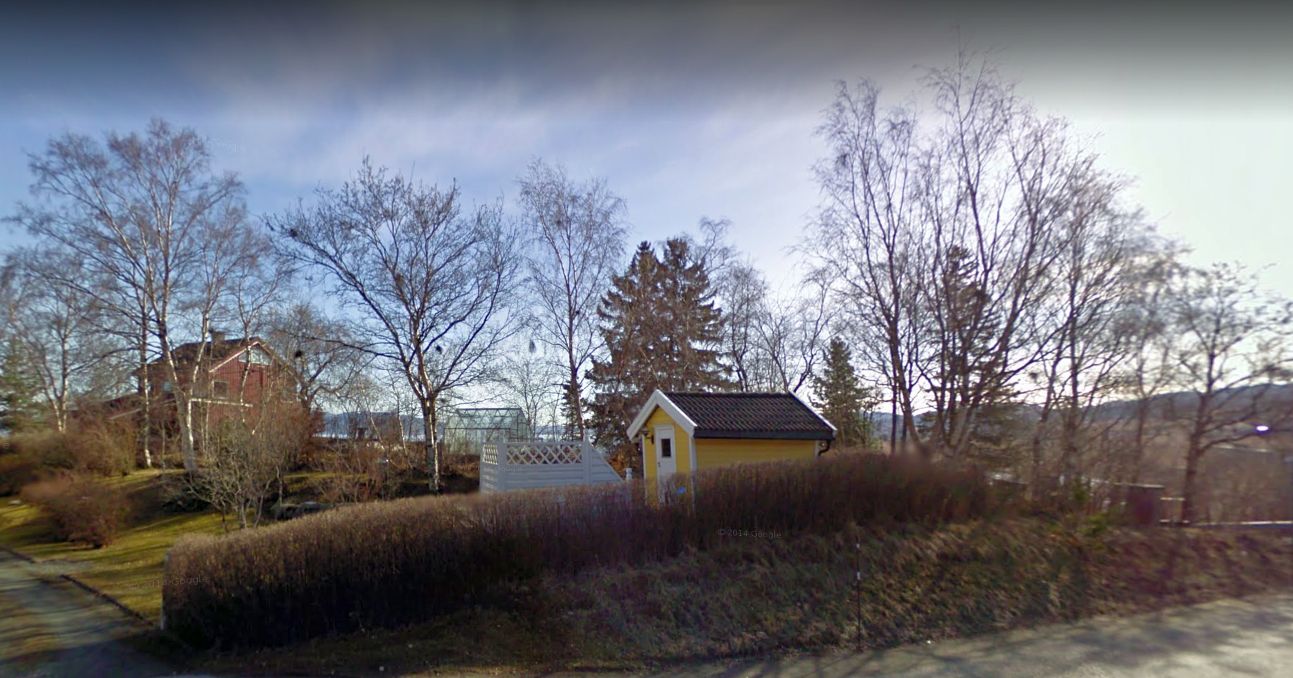
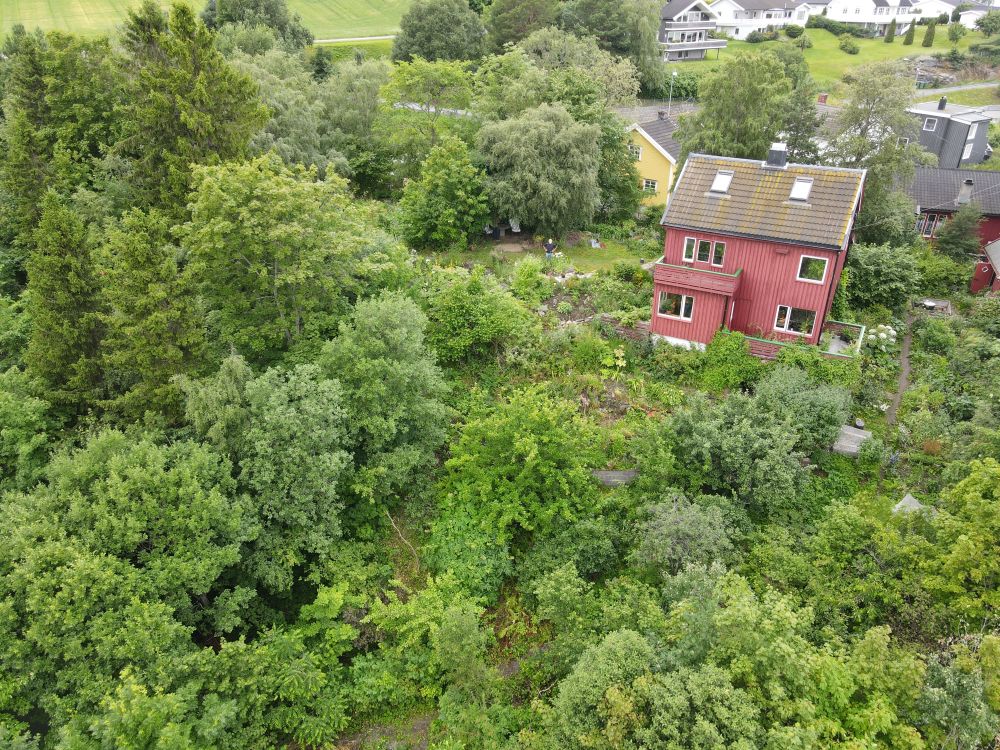
There used to be two spruce trees to the south east of and quite close to the house but they were felled when I was terracing below the house in the 90s. We found that the trees were growing on an old rubbish tip with a lot of organic material as nettles grew prolifically here. 
 …and one of original two on the western boundary next to the outhouse:
…and one of original two on the western boundary next to the outhouse: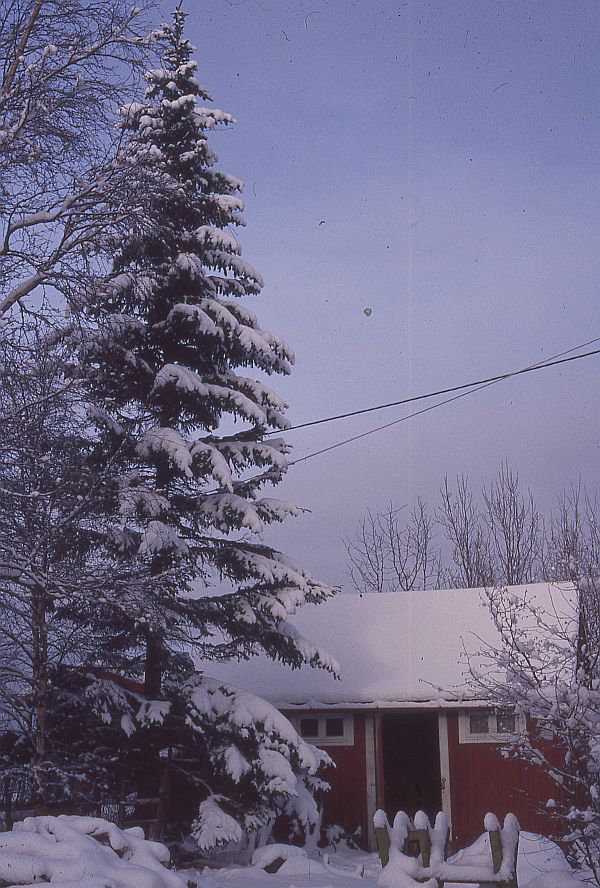 Large numbers of wood mushroom / snøballsjampinjong (Agaricus sylvicola) and a few blushing wood mushroom / blodsjampinjong (Agaricus sylvaticus) have grown under these spruce trees for many years. They are saprobic, living on decaying and dead spruce needles. The best trees were those by the outhouse (last picture above), but we had to take this one down as the neighbour was afraid it would fall over their house or the power cable. They also grew in large amounts around the remaining two spruce trees (pictures below) but I haven’t seen them for several years at the same time that hedge mustard / løkurt (Alliaria petiolata) invaded this area and I wonder if the allelopathic chemicals in this plant have impacted and killed the mushrooms. I have therefore been systematically removing the hedge mustard from the this area in the hope that the mushrooms will return. It’s amazing to think that those fallen spruce needles that we started with can transform into delicious food for us!
Large numbers of wood mushroom / snøballsjampinjong (Agaricus sylvicola) and a few blushing wood mushroom / blodsjampinjong (Agaricus sylvaticus) have grown under these spruce trees for many years. They are saprobic, living on decaying and dead spruce needles. The best trees were those by the outhouse (last picture above), but we had to take this one down as the neighbour was afraid it would fall over their house or the power cable. They also grew in large amounts around the remaining two spruce trees (pictures below) but I haven’t seen them for several years at the same time that hedge mustard / løkurt (Alliaria petiolata) invaded this area and I wonder if the allelopathic chemicals in this plant have impacted and killed the mushrooms. I have therefore been systematically removing the hedge mustard from the this area in the hope that the mushrooms will return. It’s amazing to think that those fallen spruce needles that we started with can transform into delicious food for us!
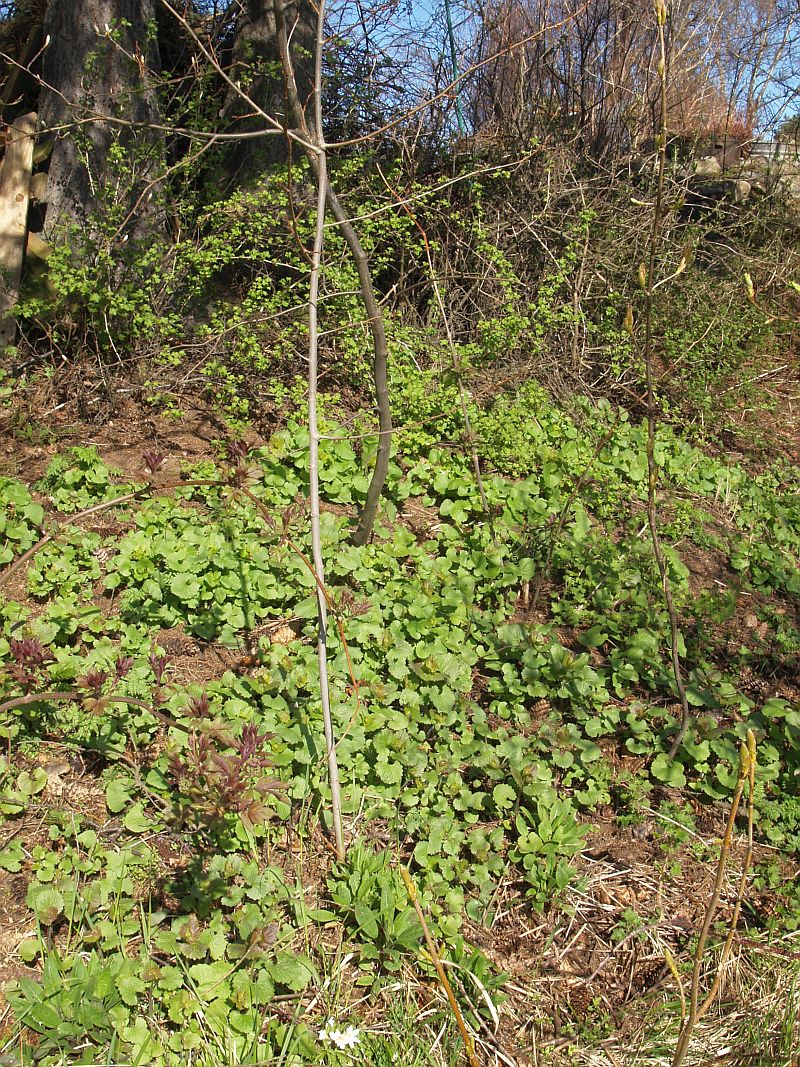




Another edible fungi associated with spruce once appeared in the garden; Lactarius deterrimus (false saffron milkcap / granmatriske):



The Ethnobotany of Spruce
There are numerous food uses of Norway spruce to be found in the ethnobotanical literature. The inner bark has been used to make bark bread in the past in bad years; the immature cones have been cooked, the seed have been eaten by children raw, the young shoots have been used to make tea and beer (and in modern times to make a sweetened drink), the needles have been used in the French/ Swiss cheeses Vacherin d’Abondance/ Vacherin Mont d’Or and the resin or gum (kvae) has been used as a chewing gum:
Other uses
I’ve used the wood of the felled trees of course to heat the house and the ash has been used for various purposes. A stump has also served as a chopping block for many years. I’ve also used branches to insulate and stop leaves from blowing away from areas of the garden like my sea kale bed that need winter protection:
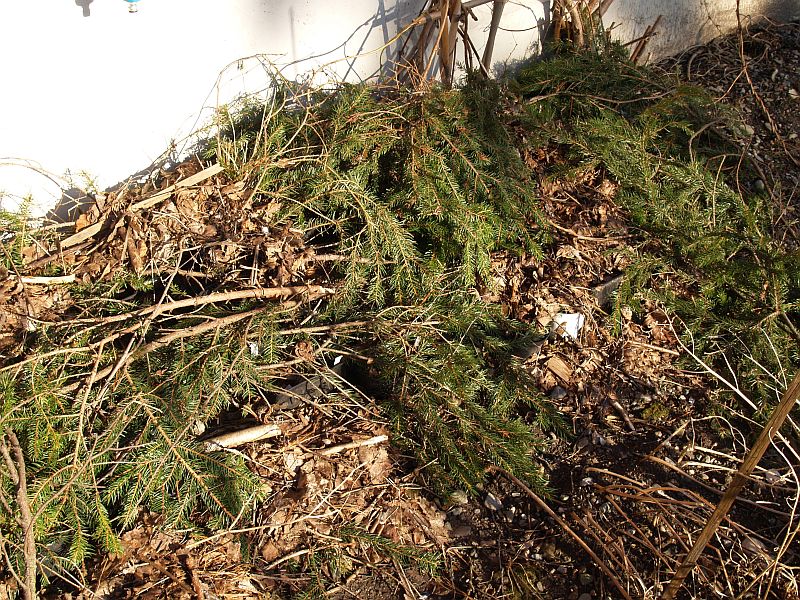
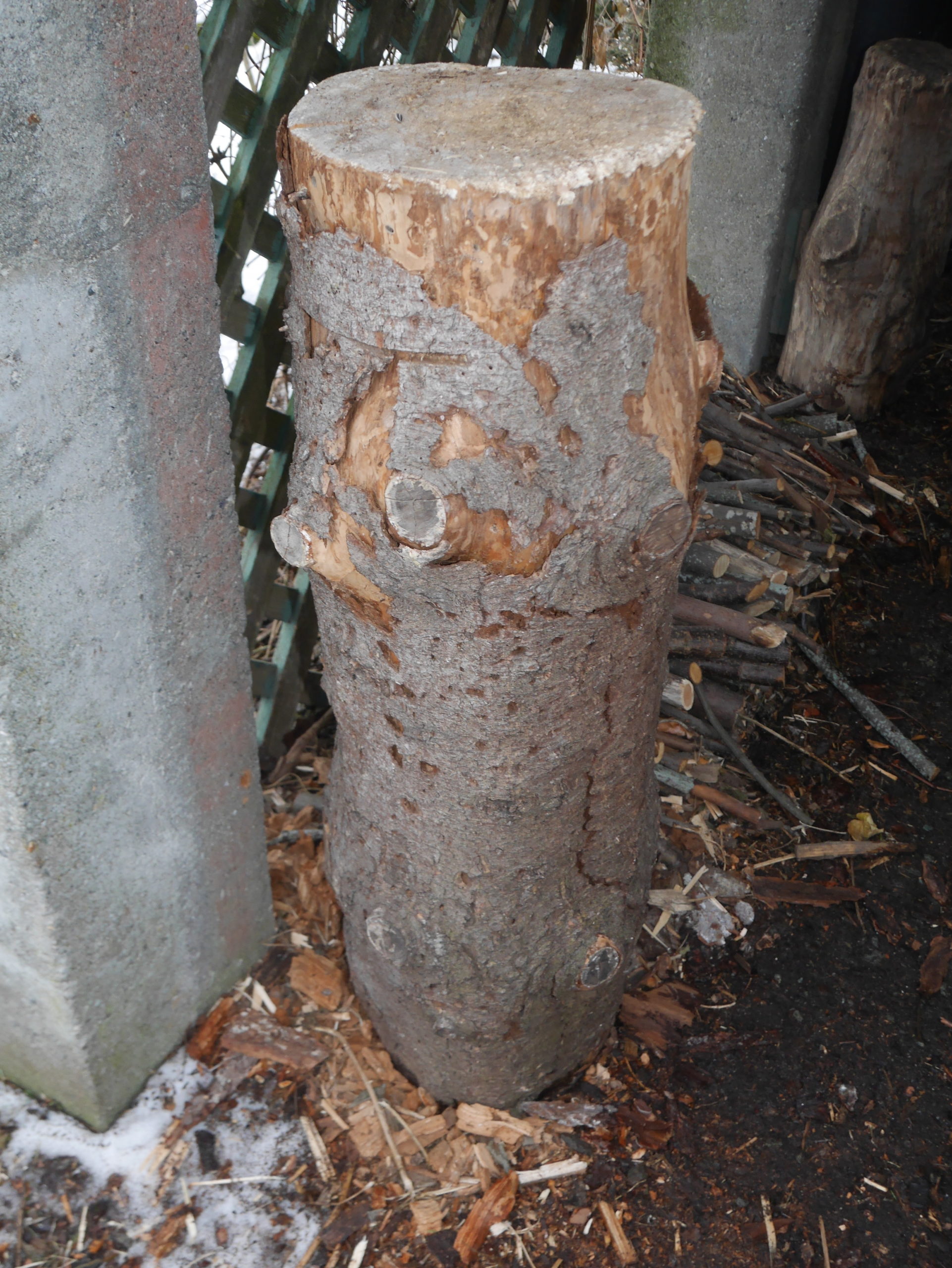
The importance of spruce for birds in my garden
The two oldest spruce trees are also extremely important for many bird species both as an excellent song post, the top being the highest point in the garden, and a place with a good view of approaching predators. Both chffinches (bokfink), robin (rødstrupe), blackbird (svarttrost), dunnock (jernspurv), nuthatch (spettmeis), greenfinches (grønnfink), brambling (bjørkefink), redwings (rødvingetrost), chiffchaff (gransanger; the Norwegian name meaning “spruce singer”), various tits, notably coal tit (svartmeis) and others sing from these trees. Here’s one video of a brambling singing and various links below to other posts I’ve made over the years of birds on these trees..
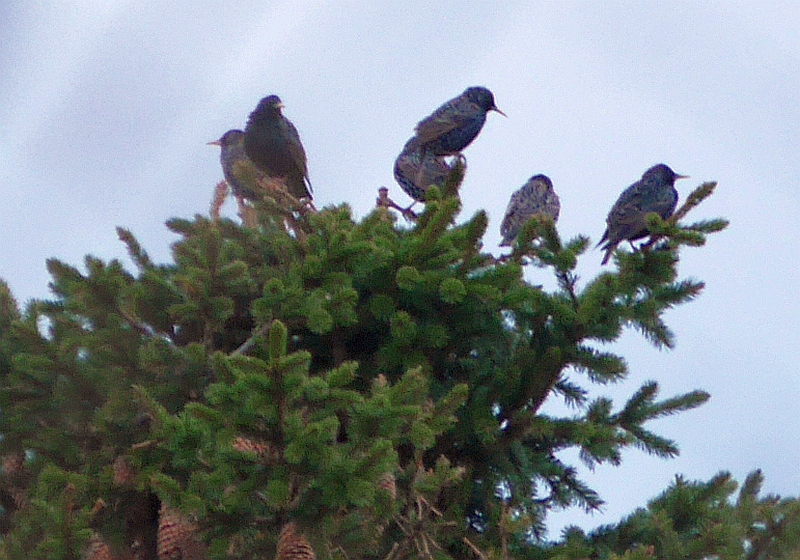
Treecreeper and goldcrests are sometimes seen foraging in the spruce trees in winter, hosting favourite hiding places for numerous insects. Here’s a recent blog post of a winter goldcrest: https://www.edimentals.com/blog/?p=27332
Some birds cache nuts and seeds for winter in trees like spruce and others may accidentally discover this and raid the caches.
On warm winter days, waxwings (sidensvans) can often be seen hawking after insects from the tree tops. Various species also nest in my spruces, most obviously magpies (skjære) and hooded crows (kråke).
A blackbird (svarttrost) above showing off its improvisational and mimicking skills atop a spruce tree this morning! It’s been a bit too cold for much song activity over the last couple of weeks, but it’s slightly warmer today with a maximum of 7C this first day of May.
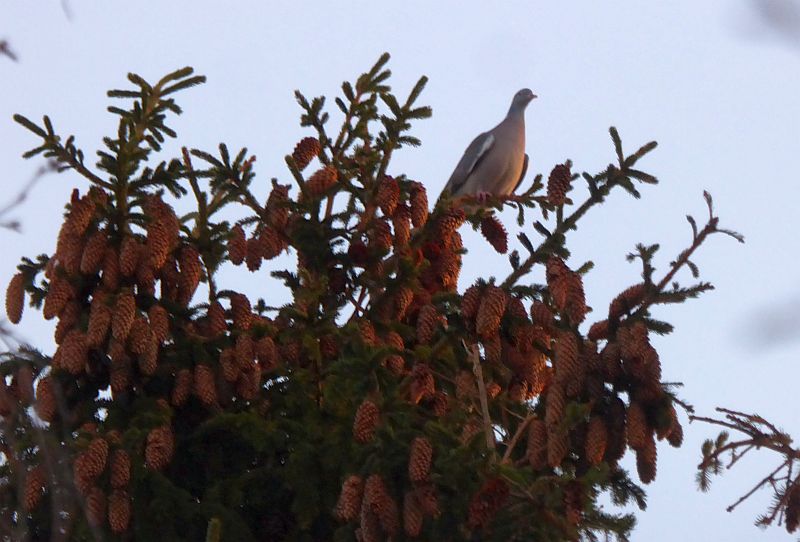
Below is a video of a redwing (rødvingetrost) in full song at 1 am on 7th June just 2 weeks away from the longest day!
Then there are specialist species like common crossbill (grankorsnebb) that turn up in “cone years” and of course great spotted woodpeckers (flaggspett) are common visitors, particularly in winter, both eating the seeds.
More videos of birds in my spruce trees:
Robin singing https://www.edimentals.com/blog/?p=22735
Siberian nutcracker juggling with a nut https://www.edimentals.com/blog/?p=23661
Dunnock https://www.edimentals.com/blog/?p=21847 and https://www.edimentals.com/blog/?p=17325
Nuthatch and great spotted woodpecker on top https://www.edimentals.com/blog/?p=16566
Nutcracker and greenfinch https://www.edimentals.com/blog/?p=12720
The first dunnock of 2021 atop one of the spruce trees in song this morning (17th April):
Flowers, cones, seeds to fungi
An album of pictures showing the whole life cycle of flowers to pollen to cones to seed and the afterlife of cones and fallen needles colonised by fungi that give us and other creatures food:
Stumps
Stumps of spruce trees left to rot are also fascinating to follow through the years as they break down slowly helped along the way by fungi and colonised by mosses:
Hepatica
I’m also fortunate having a wild population of Hepatica nobilis (blåveis) and they often grow in dry soil below younger spruce trees:
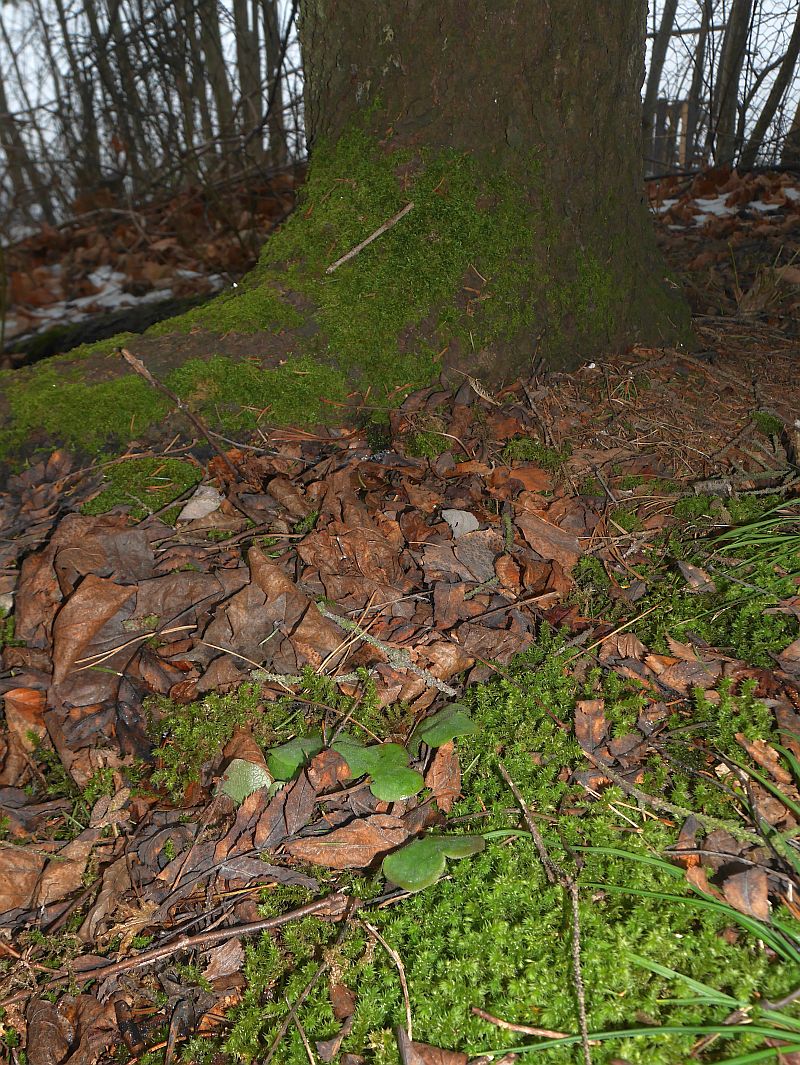
 In a sunnier spot, Hepatica can flower profusely in early spring
In a sunnier spot, Hepatica can flower profusely in early spring
Storage
Under the spruce trees is also a good spot to store pea and bean stakes as it’s dry.
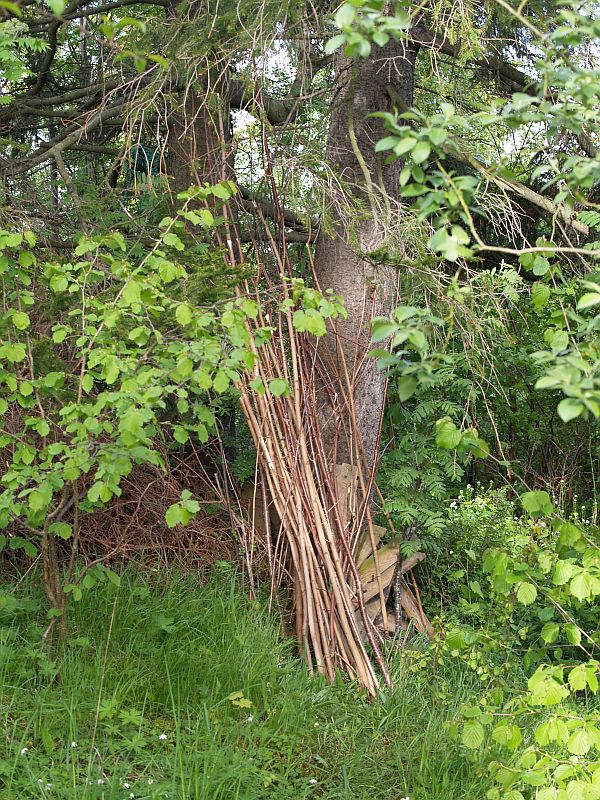

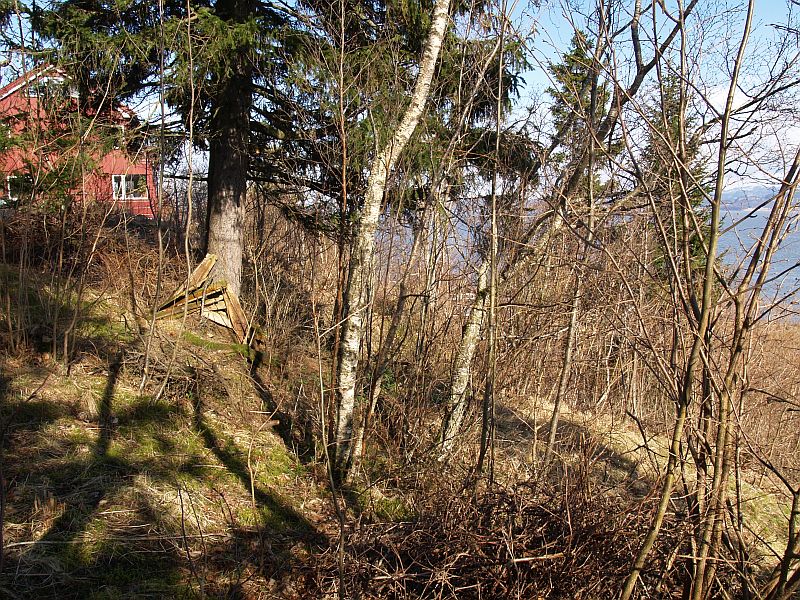
Growing out of nothing
It’s always amazing to see how such large trees grow on hardly any soil and I’ve noticed how, when removing stumps, how the tree itself has broken up the rock to create deeper soil over time. At the bottom of the garden, the lower two trees grow on even shallower soil and here you see large roots clambering over rocks in search of deeper soil:
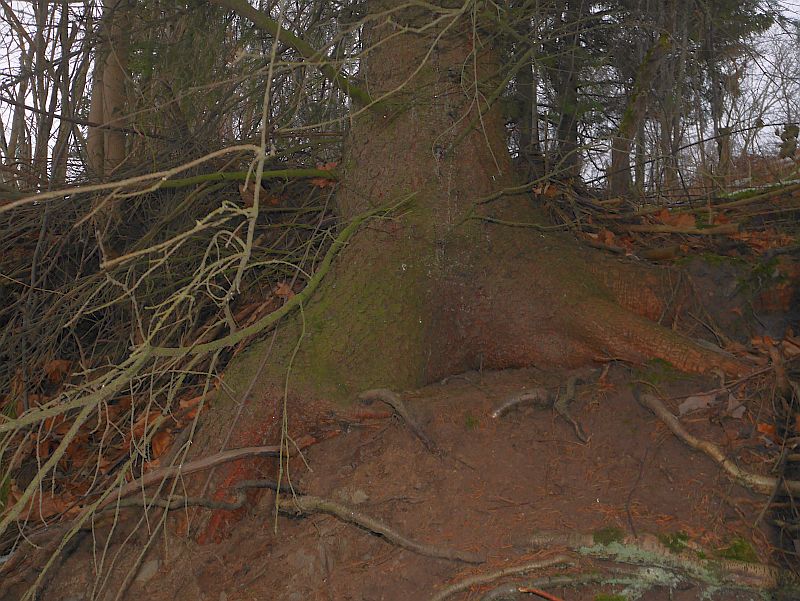
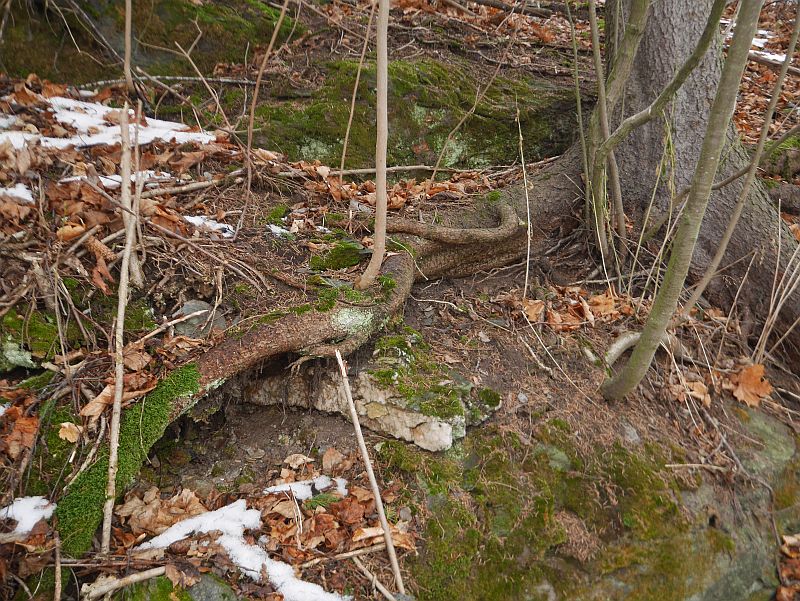

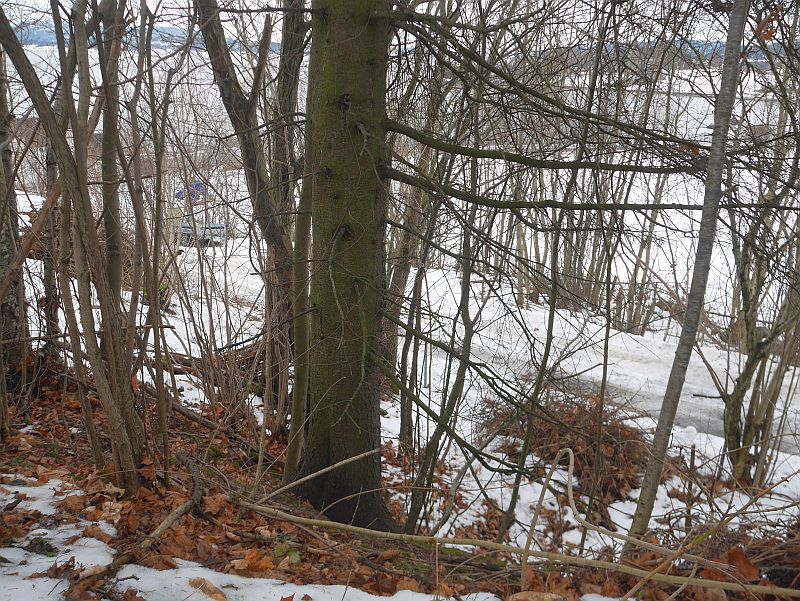
Assorted celestial and other spruce pictures through the years
A final set of pictures featuring my wonderful spruce trees over the years in various poses with the moon, the sun and a rainbow.

